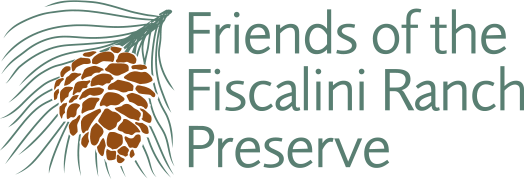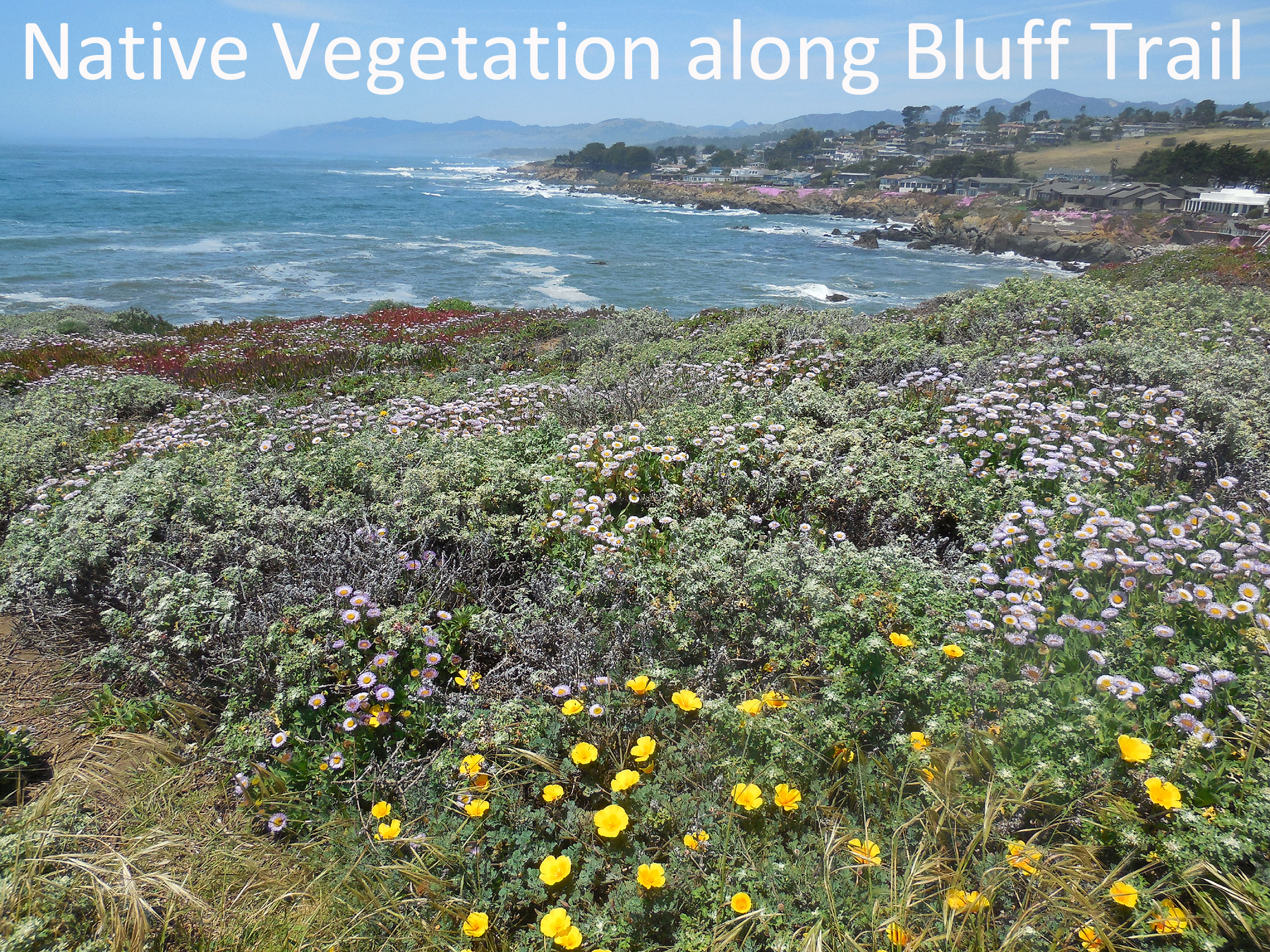2022.07.07 | Study of Invasive Ice Plant on Fiscalini Ranch Bluffs Concludes
Claire Savage defended her Masters’ thesis in biology on Wednesday at California State University, Bakersfield. Ms. Savage conducted research at Fiscalini Ranch Preserve on the interaction between invasive South African ice plant (Carpobrotus edulis and its hybrids), and the native coastal bluff vegetation.
Her study focused on two questions: does ice plant invasion change the native plant community, and if so, does that effect last after ice plant is removed? Since ice plant removal is a focus of Friends of the Fiscalini Ranch Preserve’s (FFRP) restoration program, answers to these questions can help guide our efforts.
The study found that ice plant reduced plant species diversity and continued to reduce diversity for around 18 months after removal. After 18 months, though, no legacy effects were detected. The effects of the ice plant are removed when the ice plant itself is removed. Bluff vegetation was able to recover its diversity so that it was like that of undisturbed sites.
Invasive species are plants that occur in one part of the world but have ended up somewhere else, usually because people have moved them. To be invasive, a species must be able to exploit its new environment and may even outcompete native species and influence diversity in its new location. Invasive species sometimes produce legacy effects that last even after the invasive species dies or is removed.
Last year Ms. Savage’s study plots were marked along the Bluff Trail with yellow flags. She identified plants along transect lines in five study areas ranging from currently invaded to uninvaded sites. She also grew a native species, California sand aster (Corethrogyne filaginifolia), in a university greenhouse to see if ice plant changed soil chemistry so it inhibited plant growth. While she did not find any effects of soil chemistry on the native species, her results suggested that ice plant grows best in uninvaded sites. This quality is one reason that ice plant is so invasive: it spreads to areas that are easier to colonize.
FFRP and Cambria Community Services District welcome research studies that inform Ranch management. Vigorous ice plant removal will continue on the Ranch, followed by reseeding and replanting supported by the new restoration nursery. With the results of Ms. Savage’s study in hand, we have reason to believe that replanting immediately after ice plant removal will successfully return the coastal bluffs to their natural diversity and beauty.
Article first published in https://cambriaca.org/



